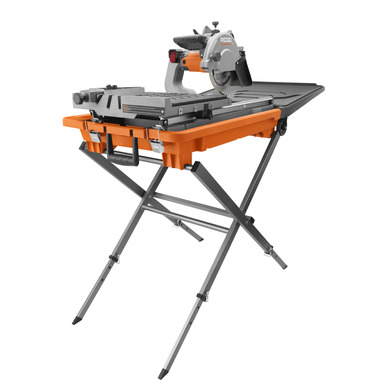Introduction
Embarking on a tiling project? A wet saw for tiles might just be the game-changer you need. In this comprehensive guide, we delve into the world of wet saws, exploring their features, benefits, and how they elevate your tiling experience.

Understanding the Basics
Introduction to Wet Saws
A wet saw for tiles is a cutting-edge tool that revolutionizes the way tiles are cut during installation. Unlike traditional saws, these marvels utilize water to cool the blade, reducing friction and ensuring clean, precise cuts.
How Wet Saws Work
Ever wondered how wet saws achieve such remarkable precision? The secret lies in the integration of water. As the blade spins, water is continuously pumped onto the cutting surface. This not only cools the blade but also eliminates debris, resulting in smoother, chip-free cuts.
Types of Wet Saws
Diving deeper, wet saws come in various types to cater to different tiling projects. From handheld models for small-scale jobs to tabletop versions for larger tiles, there’s a wet saw for every need. Understanding these types ensures you pick the right tool for the task at hand.
Choosing the Right Blade
The blade is the heart of a wet saw, and selecting the appropriate one is crucial. Factors like blade material, size, and teeth per inch (TPI) play a significant role in determining the quality of your cuts. Invest time in choosing the right blade to elevate the precision of your tile work.
Wet Saw for Tiles: Enhancing Precision
Benefits of Using Wet Saws
Why opt for a wet saw when tackling your tiling projects? The benefits are substantial. Achieve unmatched precision, reduce material wastage, and enjoy a smoother cutting experience. Wet saws also minimize the production of airborne dust, creating a healthier work environment.
Tips for Optimal Performance
To maximize the benefits of your wet saw, consider these tips. Maintain a steady pace, ensuring the blade has sufficient time to cool. Keep the water reservoir filled, and regularly inspect and replace the blade for consistent, high-quality cuts. These simple steps can make a significant difference in your tiling outcomes.
Wet Saw for Tiles: Addressing Common Queries
Can I Use a Wet Saw on Materials Other Than Tiles?
While wet saws excel at cutting tiles, caution is advised when using them on other materials. The water cooling mechanism is tailored for tile work, and using it on materials like wood may result in suboptimal cuts. Always check the suitability of your wet saw for the specific material you’re working with.
How Often Should I Change the Water in the Reservoir?
Regularly changing the water in your wet saw’s reservoir is essential. Stagnant water can lead to debris buildup, affecting the cooling efficiency. Change the water every few hours, or more frequently for extensive projects, to maintain optimal cutting conditions.
What Safety Measures Should I Follow When Using a Wet Saw for Tiles?
Safety should be a priority. Always wear protective gear, including goggles and gloves. Ensure the workspace is well-ventilated to minimize exposure to any airborne particles. Familiarize yourself with the user manual and follow recommended safety guidelines diligently.
Are Wet Saws Suitable for DIY Enthusiasts With Limited Experience?
Absolutely! Wet saws come in user-friendly designs, making them suitable for DIY enthusiasts. However, proper safety precautions and a good understanding of the tool’s operation are crucial. Start with smaller projects to build confidence before tackling more extensive tile installations.
Conclusion
In conclusion, a wet saw for tiles is more than just a tool; it’s a key ally in achieving precision, efficiency, and professional-quality results. By understanding the intricacies of wet saws, selecting the right blade, and following safety guidelines, you’ll elevate your tiling projects to new heights.
